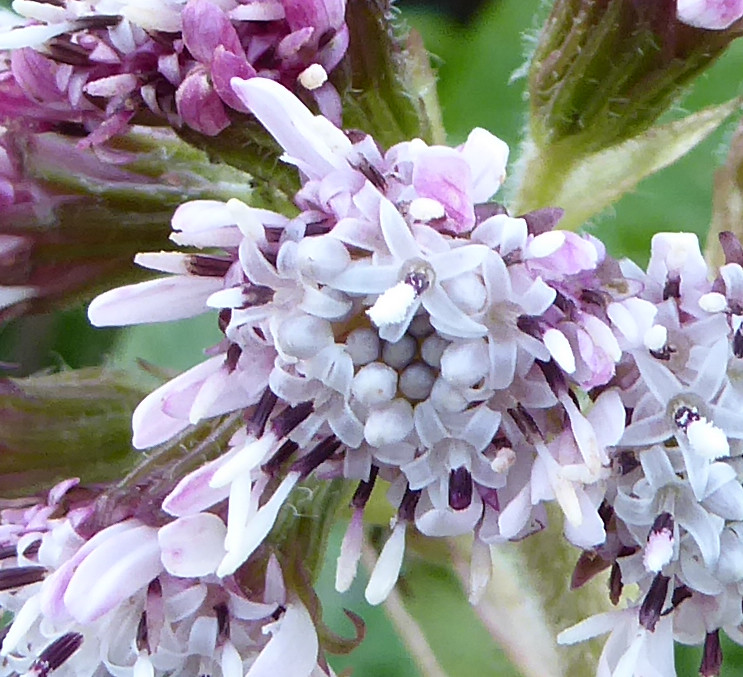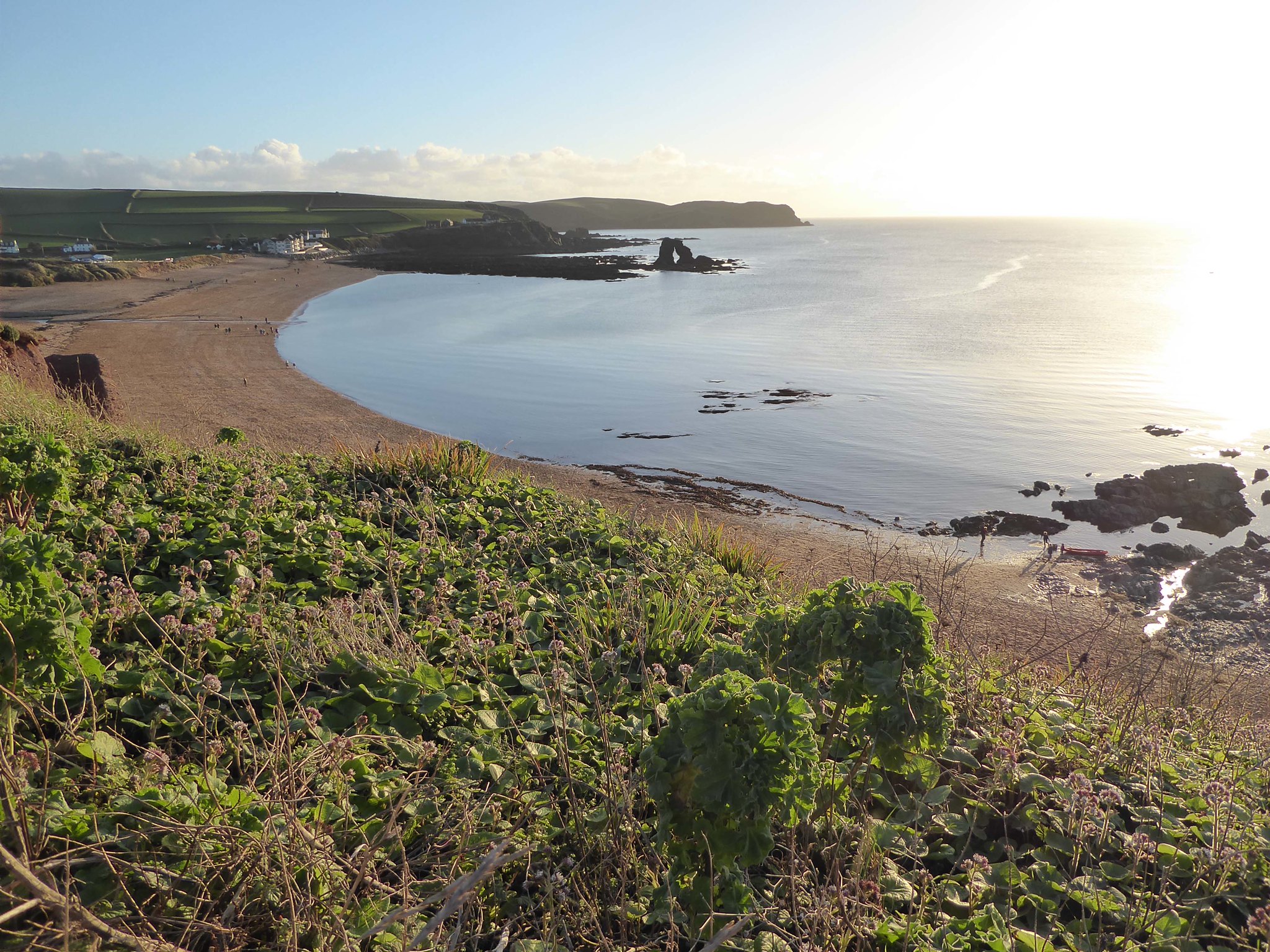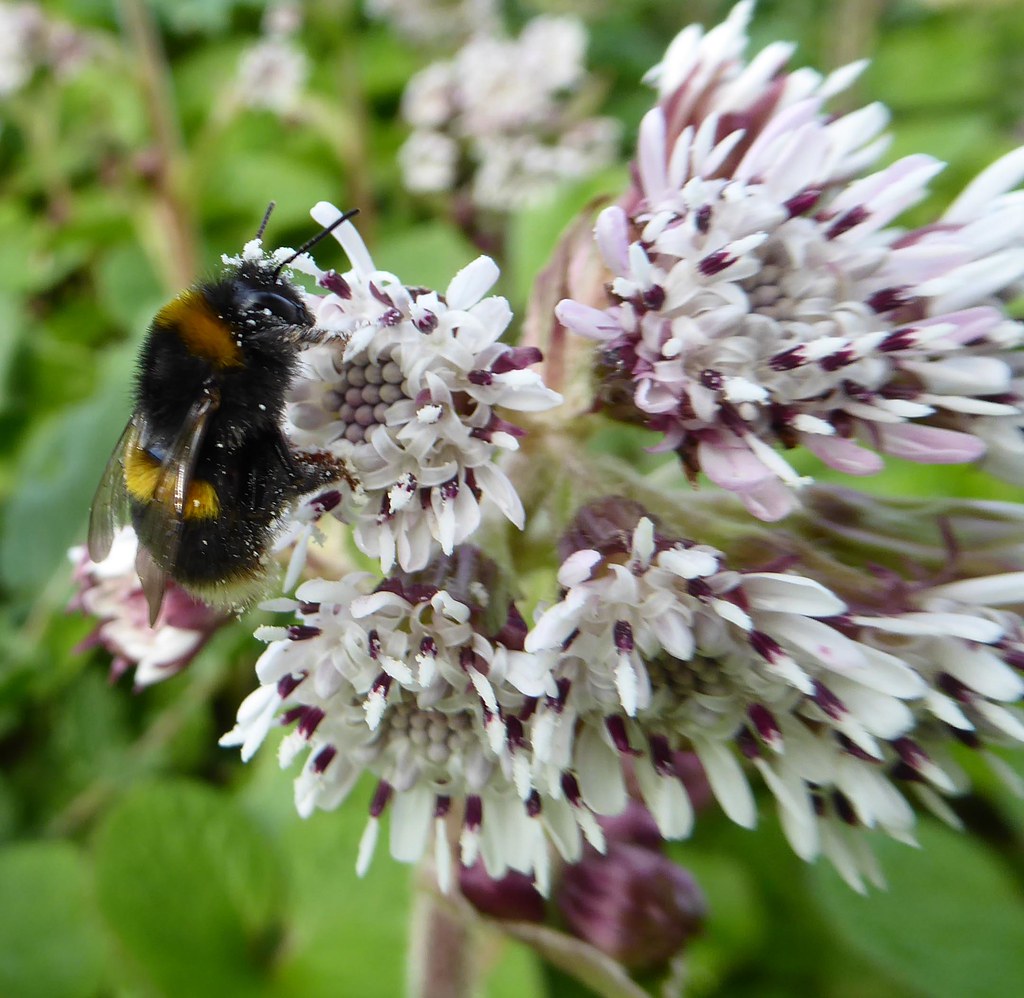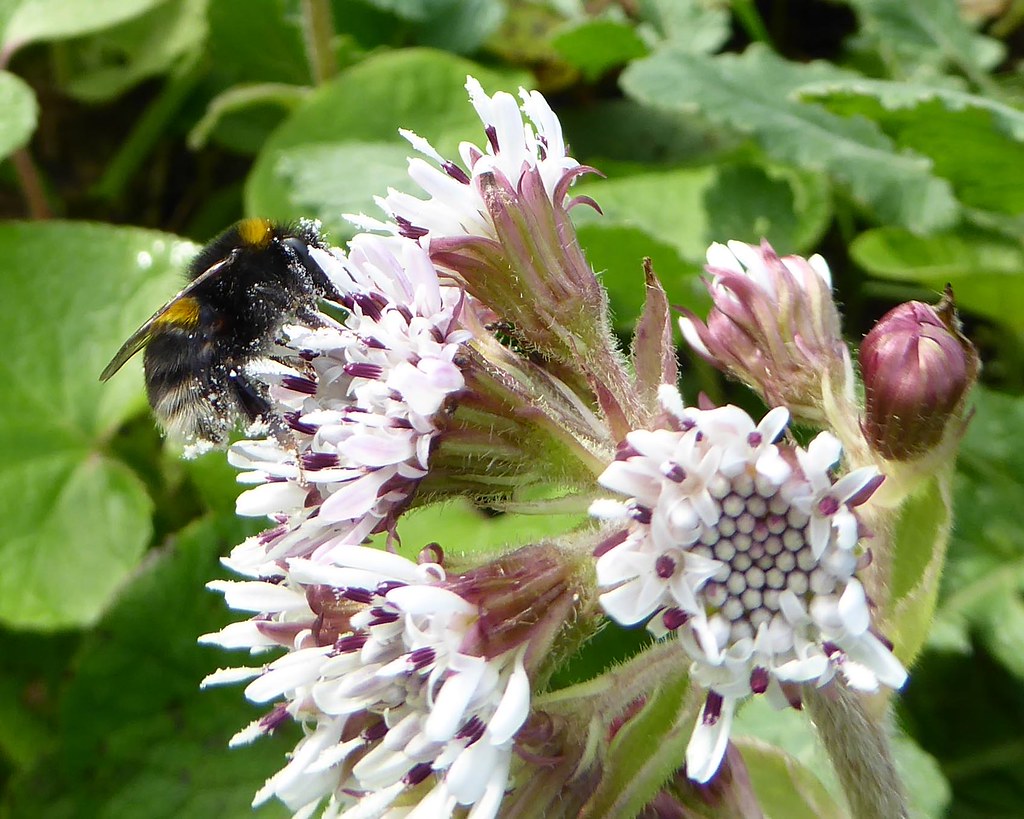We’d been walking for twenty minutes or so with plenty to see: a wooded garden with a drift of early snowdrops scattered across the grass like confetti, the winter sunshine percolating through the trees creating mosaics of light and shade, running water a constant companion. Then suddenly, something new captured my attention but I couldn’t immediately identify what it was. You know how it is when you hear a fragment of a well-known piece of music but can’t place it; only this wasn’t music. Gradually, though, I became conscious of a low-level odour permeating the air by the path. I am sure there had been other smells as we walked, such as rotting leaves and wet mud, but this was entirely unexpected: a sweet, fragrant odour that stopped me in my tracks.
It was the day after Christmas and we decided to walk the riverside path linking the village of Uplyme in the far east of Devon to the seaside town of Lyme Regis just across the border in Dorset. This was the most rural section of the walk. One side of the path was bordered by skeletal trees and a damp, woodland bank. Hart’s tongue ferns grew prolifically, their leaves spilling out across the soil, octopus-like. On the other side of the path, the ground fell away steeply to the river Lym.
But the ferns did not have it all their own way and a small section of the bank was occupied instead by heart-shaped, bright green, fleshy leaves. Floating above the leaves, on thick stems, were the flowers, daisy-like brushes of pale petals gathered together and swept upwards. Each slightly hairy stem carried several of these chunky flower heads. This was winter heliotrope (Petasites fragrans).
I bent down to smell the flowers and was greeted by a sweet, cloying fragrance that spoke to me of almonds and resurrected distant memories of amaretto liqueur; this was the source of my arresting sensory experience. Although I smelt almonds, it turns out that there is some disagreement about the exact odour of winter heliotrope. Perhaps it is the complexity of the smell; there was indeed an additional hard edge to the `fragrance that I couldn’t place, and some say the flowers smell of almonds, others vanilla, some even licorice and I began to doubt my response.
Back home, I looked for another patch of the plant to test my nose. Finding the plant wasn’t a problem; there is a lot of winter heliotrope about at present in south Devon. Much of it, however, grows by busy roads and it took me a while to find some that I could smell safely. I finally struck lucky by the coast path above the beach at South Milton Sands. Here I found drifts of winter heliotrope, some in shade and some in sunshine on the cliff top. The flower heads trembled in the breeze and the late afternoon sun highlighted the delicate colours of the flowers, some pale lilac, others tinged dark pink. Sometimes, the sea breeze carried traces of that low level woodland odour.
But what was the smell of the flowers in this seaside location? I took first sniff and smelt almonds again so my earlier response had been correct. Next Hazel tried without knowing my experience and she said lilac. It would be interesting to know what others sense when they smell winter heliotrope.
Many people, however, have an entirely different reaction to winter heliotrope, they hate it! They regard the plant as an introduced, invasive thug, taking over landscapes and eliminating native plants like a triffid destroying everything in its path. I share these concerns, but I have to admit to having a soft spot for winter heliotrope. It brightens up the sparse winter landscape and provides welcome forage for early insects. South Devon, with its mild climate, supports colonies of winter bumblebees and they need forage throughout the season. Winter heliotrope provides some of that food and this morning I watched winter bumblebees foraging on the flowers above the sea in Torquay.






I love it. Thanks Philip for this. Winter Heliotrope lined the path down to the beach from my primary school, we were allowed on to the beach to play at lunch time and to do sports so I have very clear memories of the scent that is described and I understand the difficulty pinning it down! but your writing reminded me of six years of scented beach visits in a winter Pembrokeshire!
LikeLiked by 1 person
Thanks Sue, I am pleased it evoked memories, hopefully all good ones.
LikeLiked by 1 person
First bumble bees of the year already! I’ve not smelled the heliotropes before. Maybe the smell varies between plants depending on their location?
LikeLike
Yes it’s very good to be able to see these bees even in the stern month. Location may well play a part in the smell but I havent tried enough to know yet.
LikeLike
Perfume is such an evocative sense, taking us back in time as Sue above or to a long forgotten memory that the perfume forces to the front of our mind. Thanks for a lovely post. It is a shame when a plant with some good attributes is pushing out native flora but I see no way we can stop it; it is I suppose ‘survival of the fittest’.
LikeLike
Thanks Christina, I agree perfume can be very potent in transporting us back to “long forgotten” memories.
LikeLiked by 1 person
I’m a little confused. When I first looked at the photo of heliotrope leaves, I thought “so that’s what that thing is I spend some time digging up!” However, whatever has managed to escape never flowers. And they are a bugger to get rid of. When I looked up heliotrope, the leaves pictured look different from what you have in your photo (not winter variety, I guess). Can winter heliotrope grow in summer? So I have no idea what I have that I can’t get rid of…
LikeLike
Very difficult to get rid of because when you try there is always a bit of root left that regenerates.
LikeLiked by 1 person
Now that my snowdrops have died back, it’s like its mounting a fresh offensive…
LikeLike
What we need is a system of describing aroma – just like colour. No longer need we waffle about crimson or amaranth ; now there are systems to describe colour in terms of three numbers more precisely than the eye can distinguish. The first work was done at the National Physical Laboratories in the late 1920s and extended further in the sixties. Can they help here, do we think. . . and should they?
LikeLike
I think it should be done by chemical analysis of the odour but although I looked for such studies I found nothing about this plant.
I did find this: http://cenblog.org/newscripts/2013/04/chemistry-of-the-bar-amaretto-101/
suggesting that a simple chemical (benaldehyde) carried all the almond smell in amaretto.
LikeLike
Of course, I spoke to soon. No surprise there. Took advantage of warm weather today to do a bit of pruning, weeding, tidying etc. And among the heliotrope growing here and there? Blooms!
LikeLike
Did the flowers look like those in my picture?
LikeLike
Exactly, unfortunately….
LikeLiked by 1 person
I’m sure I saw some of these on one of my walks last week with the dog, the flowers were only just starting to emerge. I will have to walk that way again and take another look! Sarah x
LikeLike
Sorry to be slow to reply. Thanks for your comment Sarah, did you find the plant, there has been a lot of it about this year.
LikeLike
It has been some years since I saw the winter heliotrope here and I found the perfume pleasant but difficult to describe. It was the same time in January that I saw them but as they are frost sensitive, I do not think they become very invasive around this area. Amelia
LikeLike
Thanks for your comment Amelia, sorry to be slow to reply. I was interested to hear about frost sensitivity in your part of France. I always thought that it was milder where you live but the plant certainly flourishes in the UK in the milder and wetter south west.
LikeLiked by 1 person
We have had a particularly cold spell recently with over a week of sub zero nights, some going as low as minus nine.
LikeLike
Yes, that is cold!.
LikeLiked by 1 person
When the picture came up I reckoned you had solved an ID problem for me. But when you mentioned the smell . . . I’ve never noticed a smell so I suppose it’s not them after all. The patch of plants I’m thinking of (they do look very like these . . . ) is definitely a ‘patch’ – a stretch along a path where there’s something of a break between trees. They don’t seem to be taking over other places near by. The flowers don’t all stick to the same time of year though . . . or maybe it’s just that they have a long flowering period? I’ll have to go and seek them out and crush a stem. Perhaps some people smell almonds, some lilac and some – nothing! Or maybe that despite the light this group of plants never warms up enough here to release their scent?)
LikeLike
Thanks for your comment.Lucy. The ones I saw near Lyme were only a small patch whereas in Devon I have seen huge swathes of the plant, so its very variable. Perhaps towards the end of the flowering season the flowers lose their fragrance?? If you were to take a photo we could try to ID the plant??
LikeLike